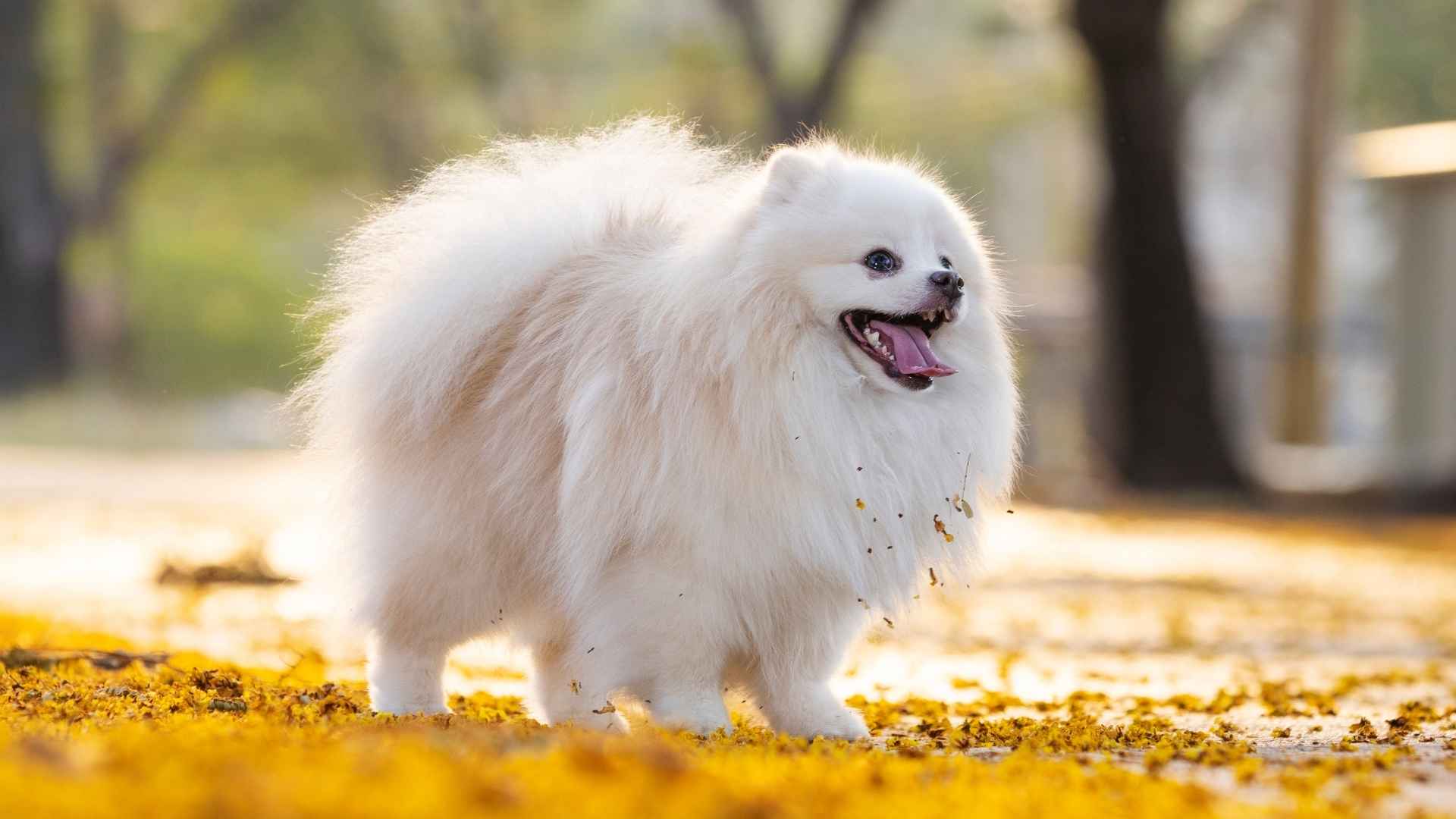Japan’s canine heritage is as rich and diverse as its cultural traditions. For centuries, native Japanese dog breeds have been deeply woven into the fabric of society, serving roles that range from fearless hunters tracking wild boar in rugged terrains to pampered lap dogs gracing the homes of nobility. These breeds are not just pets; they are living embodiments of the country’s unique relationship with animals, shaped by history, geography, and purpose.
While Japan may seem a world away from the West, the nation shares a universal sentiment: dogs are cherished companions, protectors, and helpers. Just as working breeds were developed across Europe and North America, Japan’s own breeds were cultivated with intention, each serving a vital function. From mountainous regions to coastal towns, these dogs have evolved with purpose and pride.
This article explores some of the most fascinating dog breeds native to Japan, highlighting their origins, characteristics, and the special roles they continue to play both at home and abroad.
Japanese Dog Breeds
1. Akita
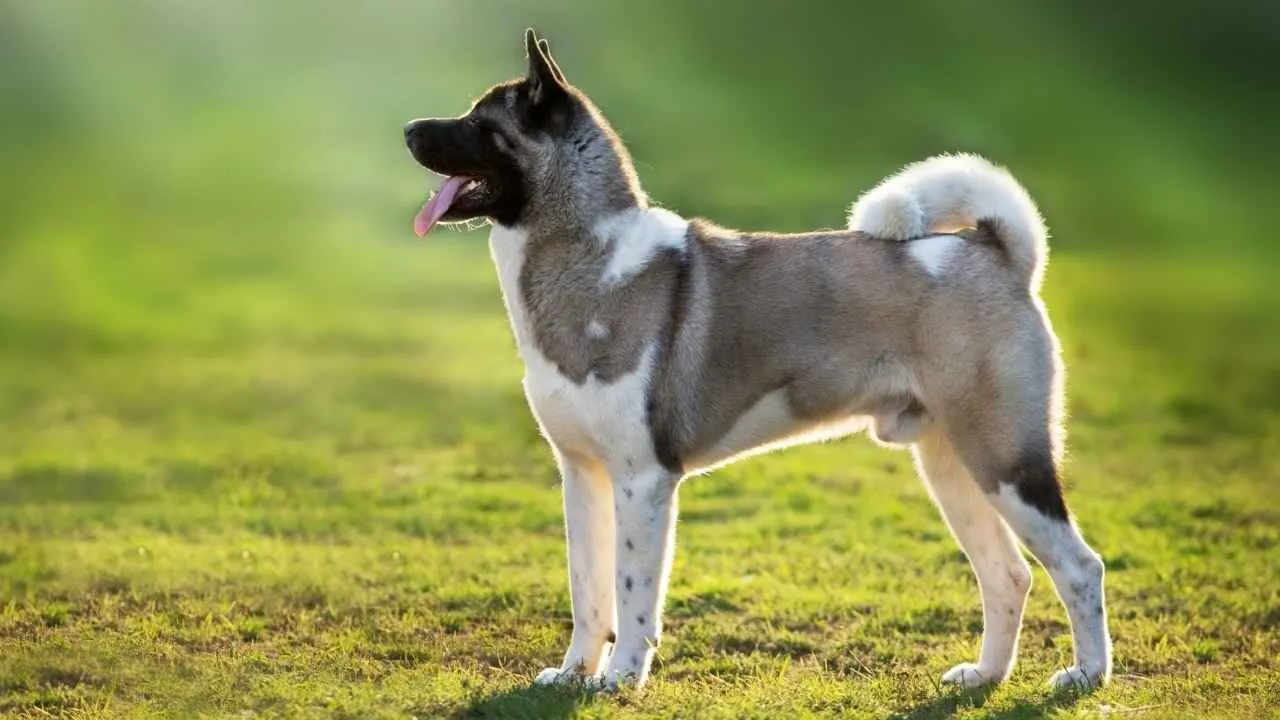
Muscular and noble, the Akita is one of Japan’s most revered dog breeds. Originally developed for hunting large game such as wild boar and bears, this powerful spitz-type dog has long been admired for its bravery and dignified presence. Today, the Akita remains a steadfast companion and guardian, often forming deep bonds with its family while remaining aloof toward strangers.
The AKC describes the Akita as a noble, brave, and deeply devoted companion. Though quiet and independent by nature, Akitas are affectionate with loved ones and thrive in homes where they are socialized properly from an early age. With a double coat that comes in various colors and a bold, alert expression, they require consistent grooming and confident handling.
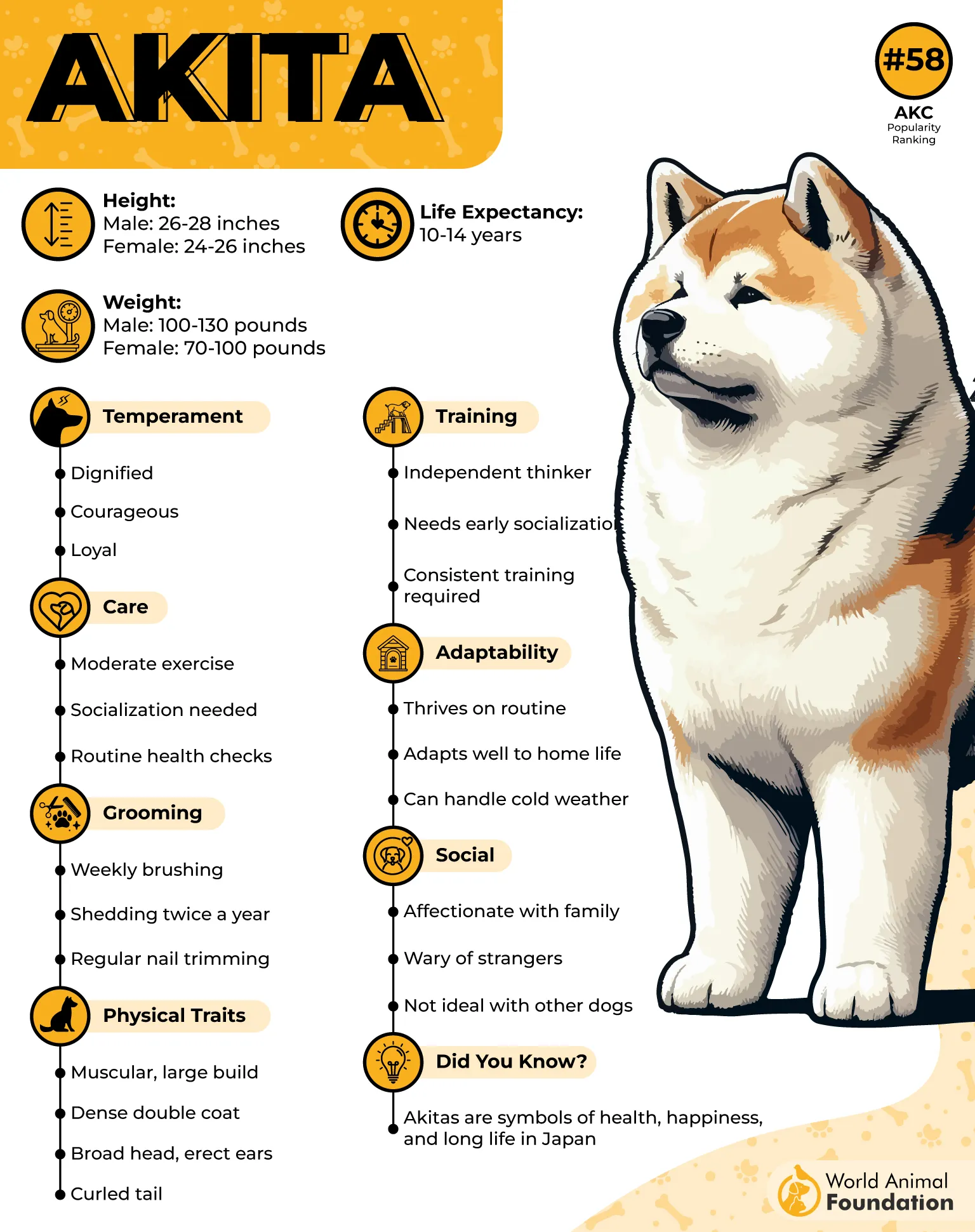
History
The Akita’s roots trace back to the early 17th century in northern Japan’s Akita Prefecture. Originally bred under the patronage of exiled nobility, Akitas became exclusive to Japan’s imperial family for generations. They’ve symbolized health, happiness, and long life in Japanese culture—parents even receive Akita figurines to bless newborns.
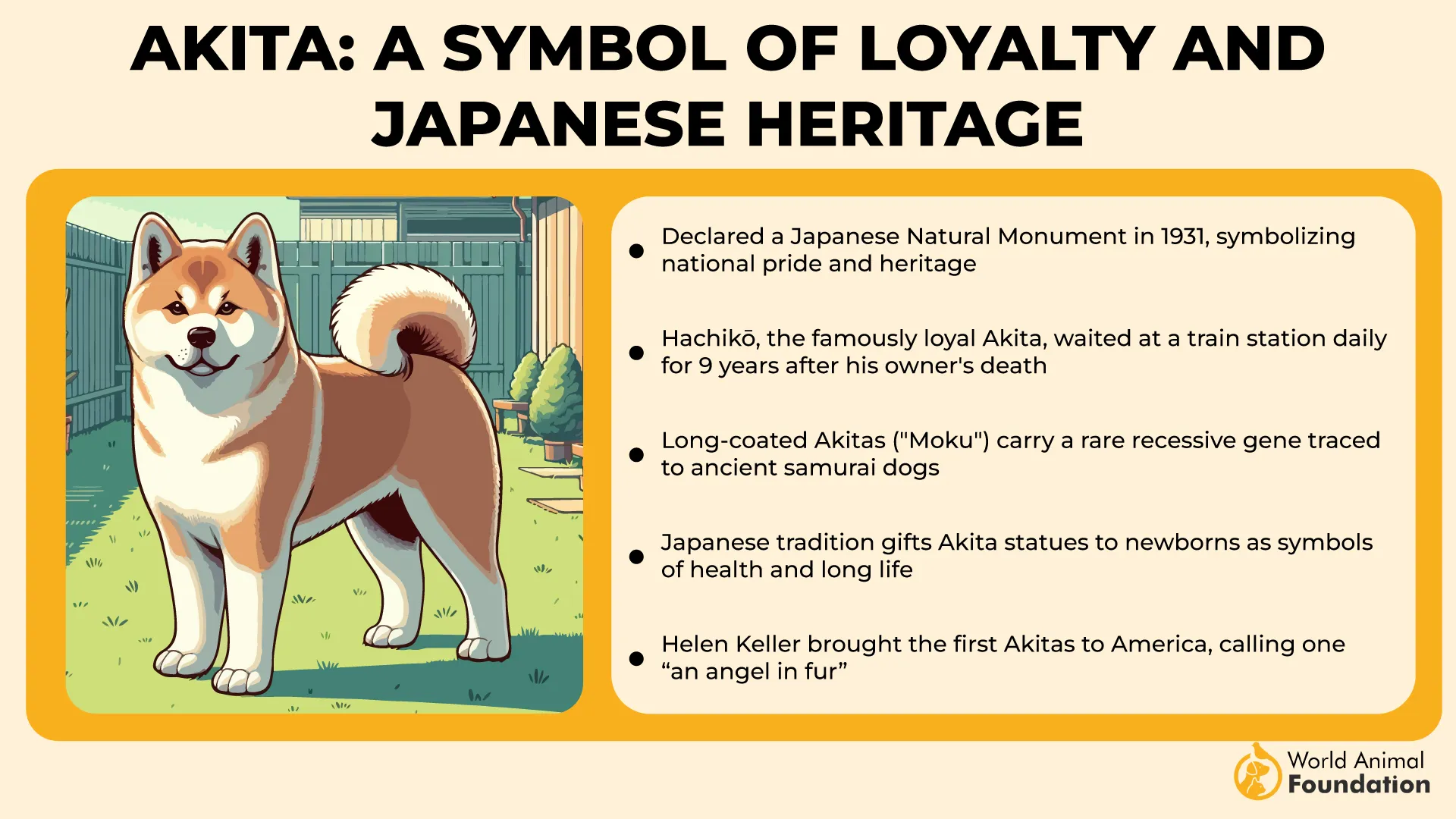
Though nearly extinct at several points, the breed was preserved thanks to Japan’s national breed club and gained fame abroad when Helen Keller introduced the first Akita to America. Its popularity grew post–World War II, cementing the breed’s legacy both in Japan and internationally.
Fact: This affectionate dog breed stands 24 to 28 inches tall and can weigh over 100 pounds.
2. Shiba Inu
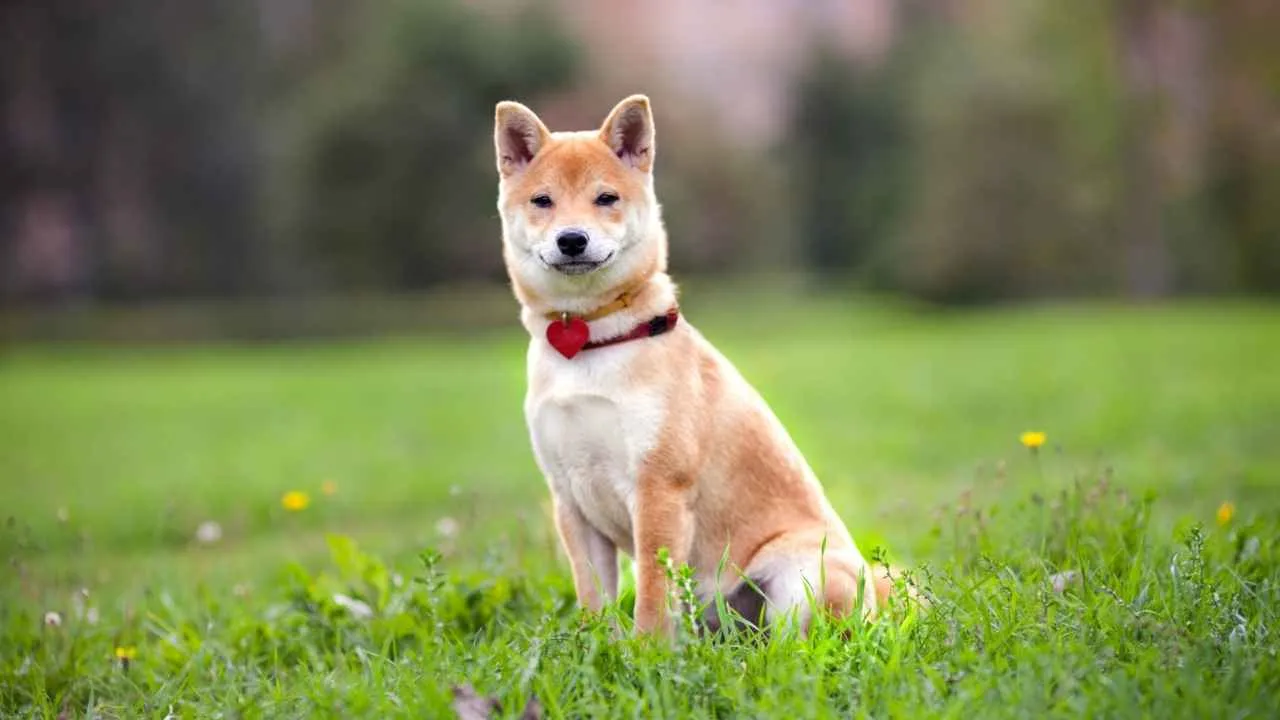
Compact, agile, and bold, the Shiba Inu is Japan’s smallest native dog breed, yet it possesses an outsized personality. Weighing between 15 to 24 pounds and standing 13.5 to 16.5 inches tall, the Shiba is known for its confident demeanor, sharp intelligence, and spirited independence. Their curled tail and plush coat give them an undeniably charming appearance.
Petplan states that Shibas, with their fox-like appearance and confident, watchful nature, are a favored breed among experienced owners seeking a faithful companion. Often described as cat-like in their cleanliness and attitude, these alert dogs thrive with experienced owners who can channel their energy and assertive nature. Despite their small size, Shibas maintain a strong prey drive and a fearless approach to life.
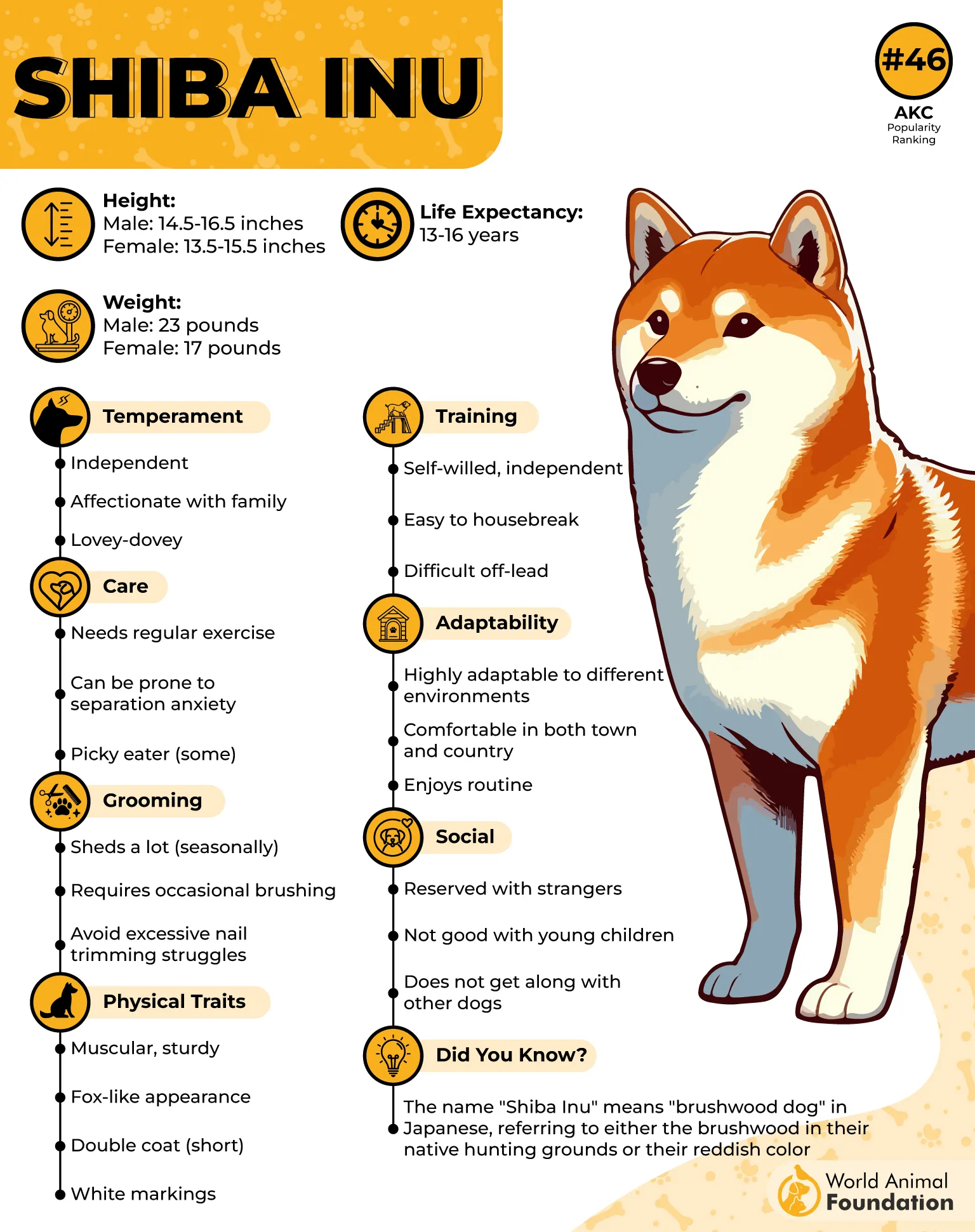
History
The Shiba Inu’s roots run deep into Japan’s ancient past, with lineage dating back to 300 B.C. Originally bred to navigate brushwood-covered mountains while hunting birds and small game, they occasionally assisted in tracking larger animals like deer and boar. The name “Shiba” reflects this heritage, referencing both the rugged terrain and the breed’s reddish coloring.
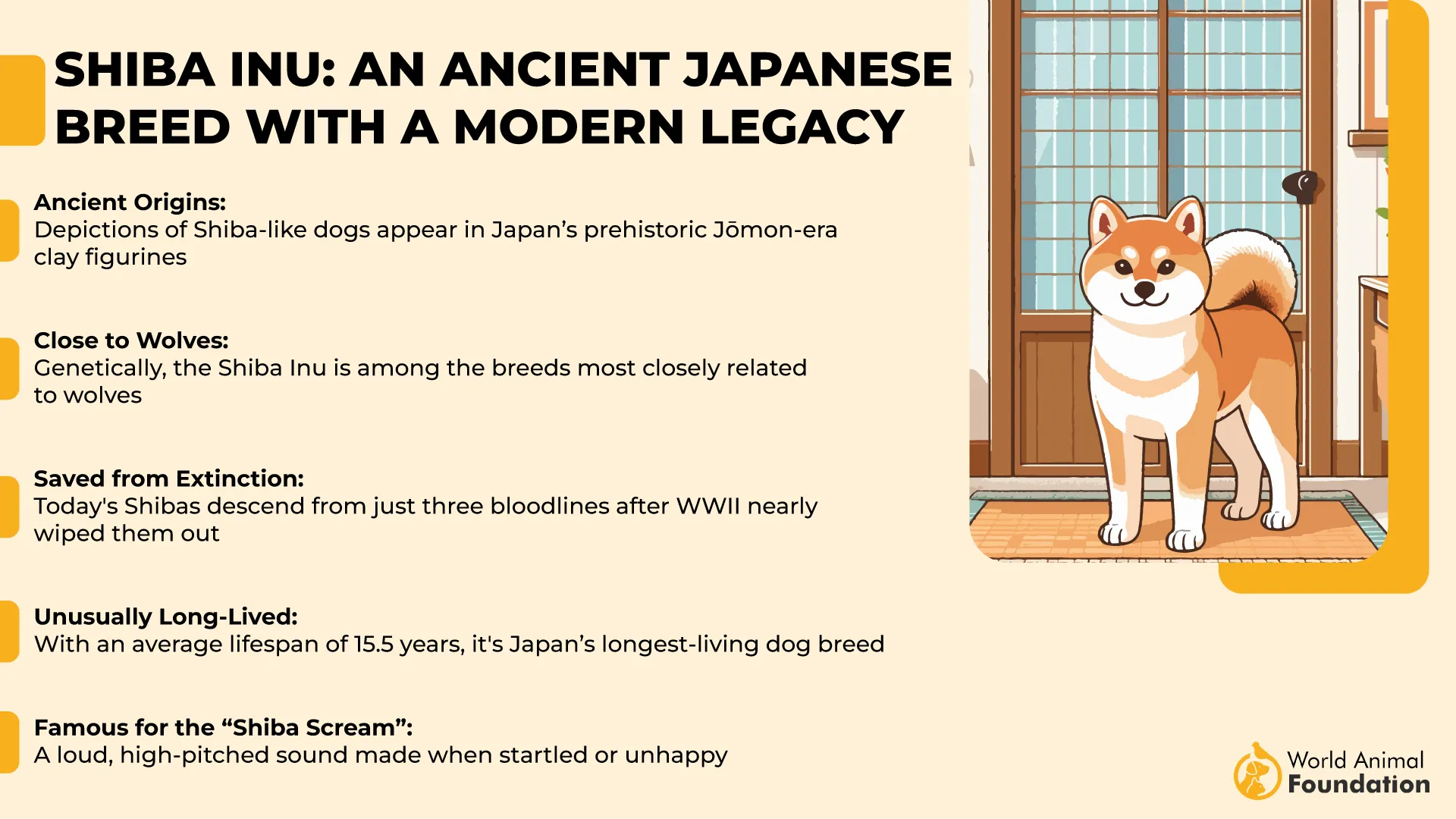
By the end of World War II, the breed neared extinction, but recovery efforts preserved their legacy. The first Shiba arrived in the U.S. in 1954, and since then, they’ve become increasingly admired for their tenacity and charm.
Fact: Shiba Inus are known for their distinctive “shiba scream”, a vocal expression of excitement or displeasure.
3. Japanese Spitz
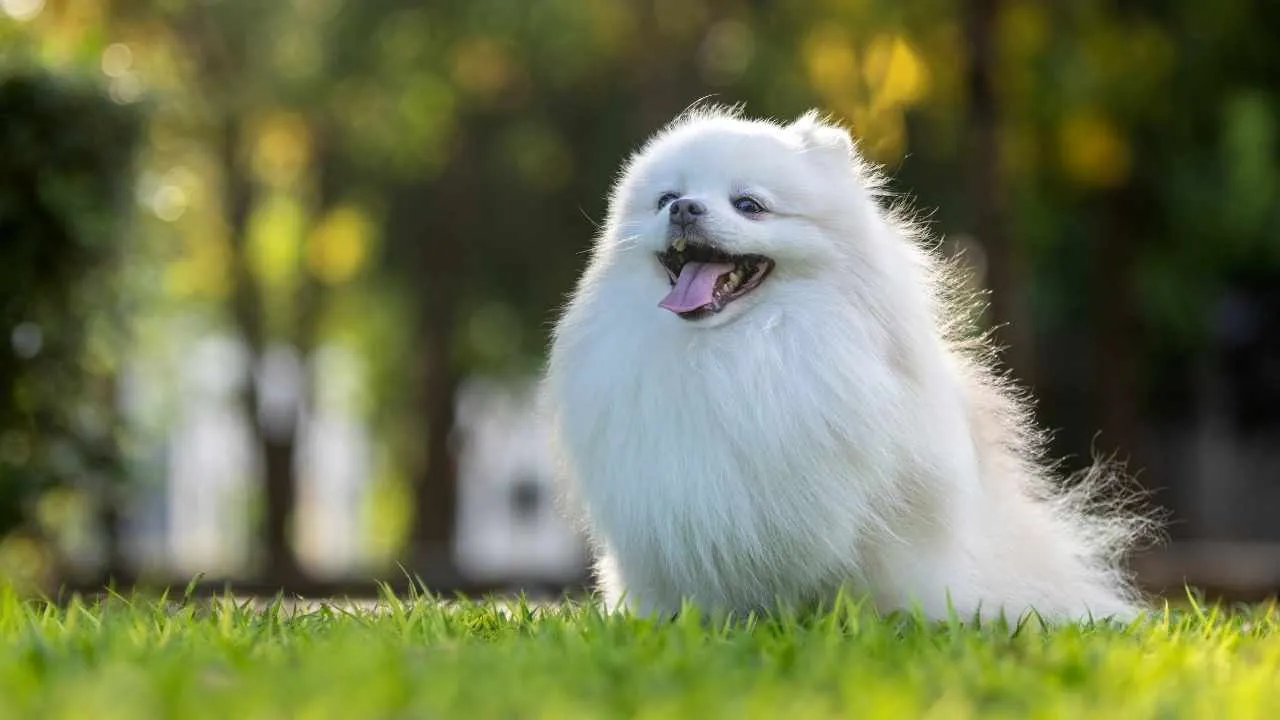
With its gleaming white coat and joyful disposition, the Japanese Spitz is a charming companion breed cherished for its affectionate, playful nature. Compact and elegant, this small dog fits seamlessly into a variety of households, from city apartments to suburban homes.
Known for being intelligent and easy to train, the Japanese Spitz thrives on human interaction and delights in spending time with its family. PetMD explains that Japanese Spitz dogs have a medium energy level and typically require 30 to 60 minutes of daily physical activity. Distinct features like high-set triangular ears, catlike feet, and a plume-like tail carried over the back add to its graceful yet lively appearance.
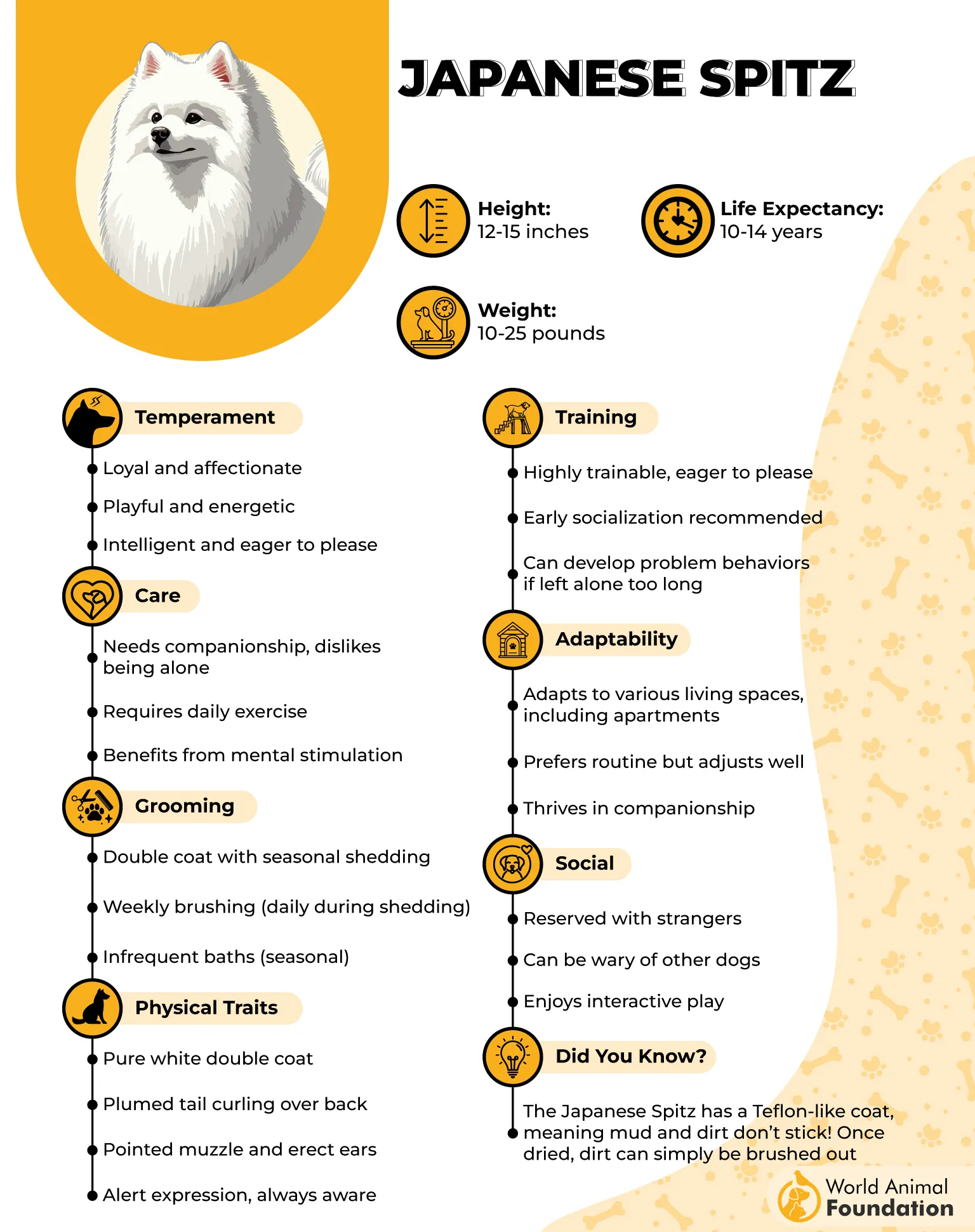
History
The Japanese Spitz was developed during the 1920s and 1930s through selective crossbreeding of spitz-type dogs imported from countries such as Australia, China, Canada, Siberia, and the United States. Though specific records were lost during World War II, the breed’s purpose as a loyal companion was clear from the start.
Drawing similarities to the German Spitz and American Eskimo Dog, this breed emerged as Japan’s own affectionate, fluffy addition to the spitz family. Today, the Japanese Spitz is recognized by the United Kennel Club and is part of the AKC’s Foundation Stock Service.
Fact: Japanese Spitz dogs typically stand 12–15 inches tall and weigh between 11–20 pounds.
4. Japanese Chin
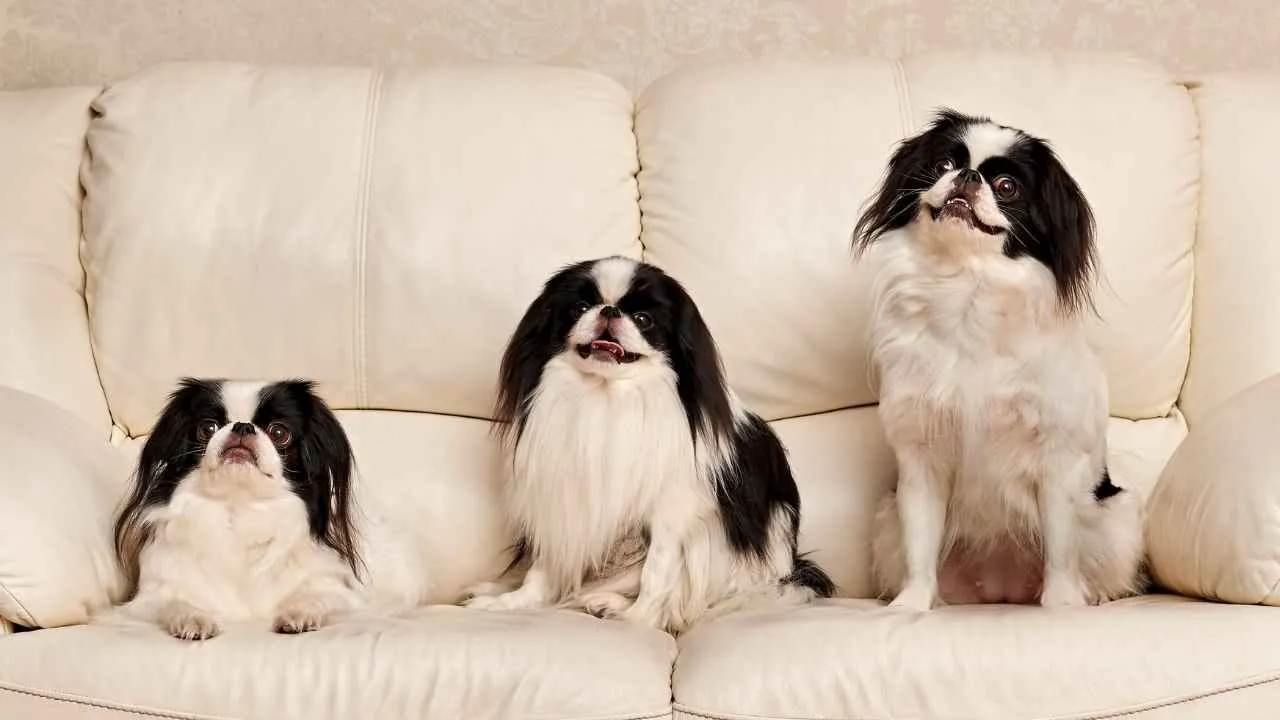
Delicate and elegant, the Japanese Chin is a toy breed with a serene presence and refined charm. Weighing between 4 to 9 pounds and standing just 8 to 11 inches tall, these small dogs are ideal indoor companions. WebMD notes that the Japanese Chin is an elegant breed recognized for its feline-like behavior, plush coat, and amusing, flat-faced appearance.
Their gentle demeanor and expressive faces, reminiscent of breeds like the Shih Tzu or Pug, make them both visually captivating and emotionally intuitive. Despite their size, they carry themselves with an air of nobility, displaying grace in both movement and temperament. Affectionate and devoted, Japanese Chins thrive in calm households.
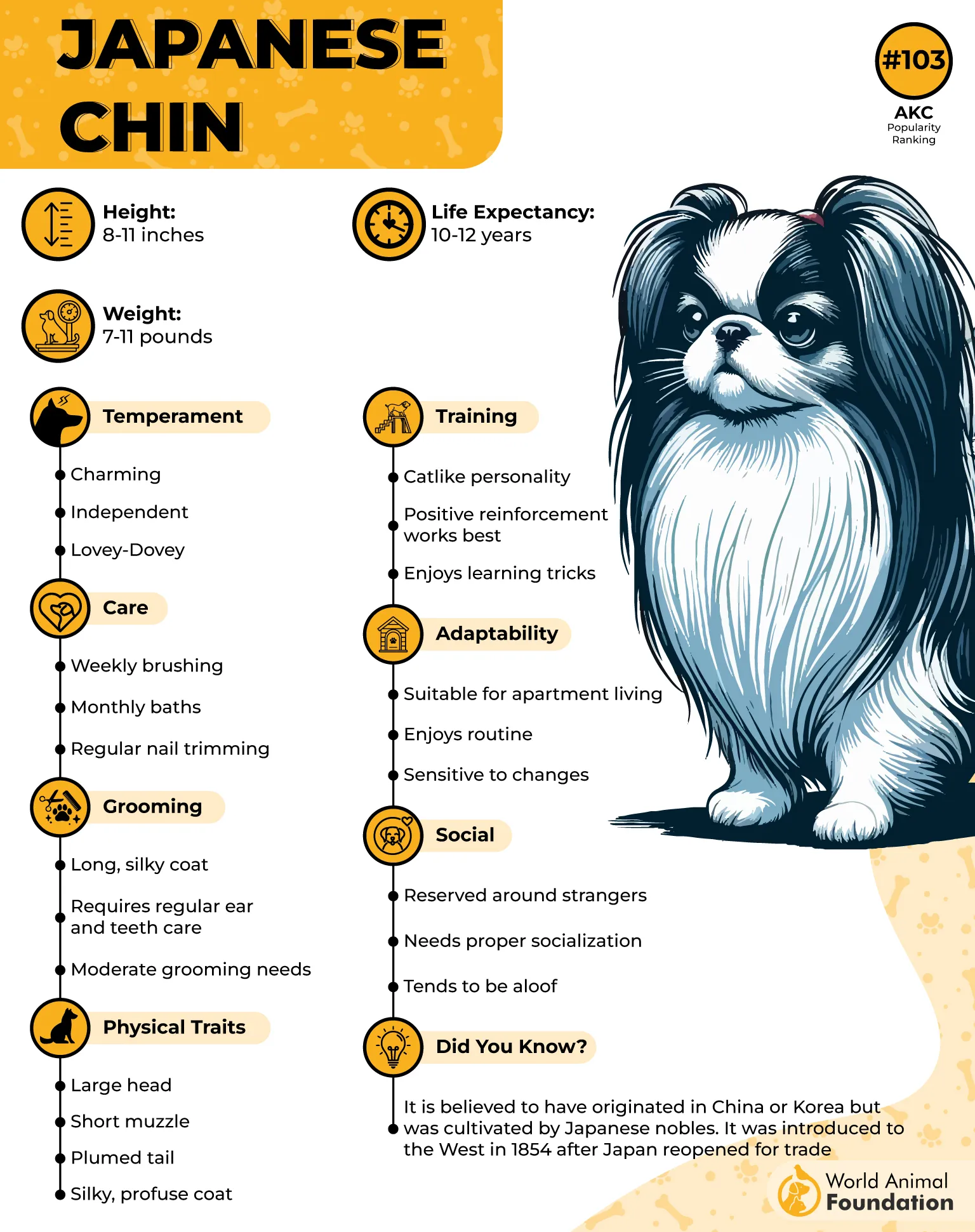
History
Though their name suggests otherwise, the Japanese Chin likely originated in China or Korea over 500 years ago. Introduced to Japan as gifts to the imperial court, they were swiftly embraced by aristocrats and royalty. The breed’s role extended beyond companionship, they were regarded as living ornaments and symbols of refinement.
The name “Chin,” meaning “royalty,” reflects their elevated status. Often gifted to foreign dignitaries as tokens of honor, they became symbols of both diplomacy and devotion within Japanese high society.
Fact: These regal lapdogs were once treasured gifts from the Japanese imperial court to foreign diplomats.
5. Shikoku
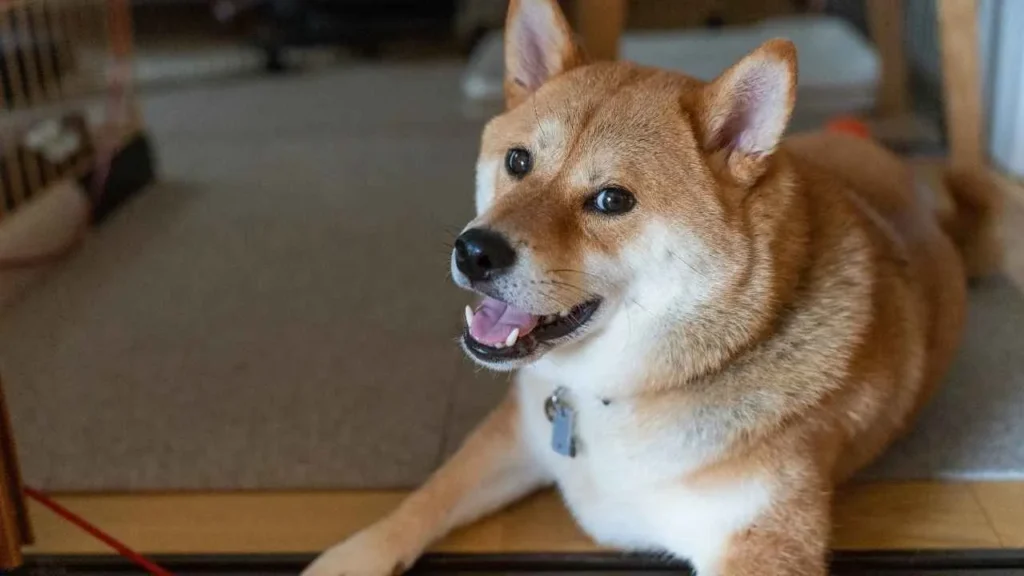
Agile, alert, and innately independent, the Shikoku is a rare Japanese breed that blends sharp instincts with calm composure. With a sturdy build and a fox-like expression, this medium-sized dog is both an energetic outdoor companion and a devoted home guardian.
Possessing a double coat, harsh and straight on the outside with a dense, soft underlayer, this rare dog breed comes in striking color patterns like sesame, red, or black and tan. Known for their curled tails and expressive eyes, they adapt well to active households where both mental stimulation and physical activity are part of the daily routine.
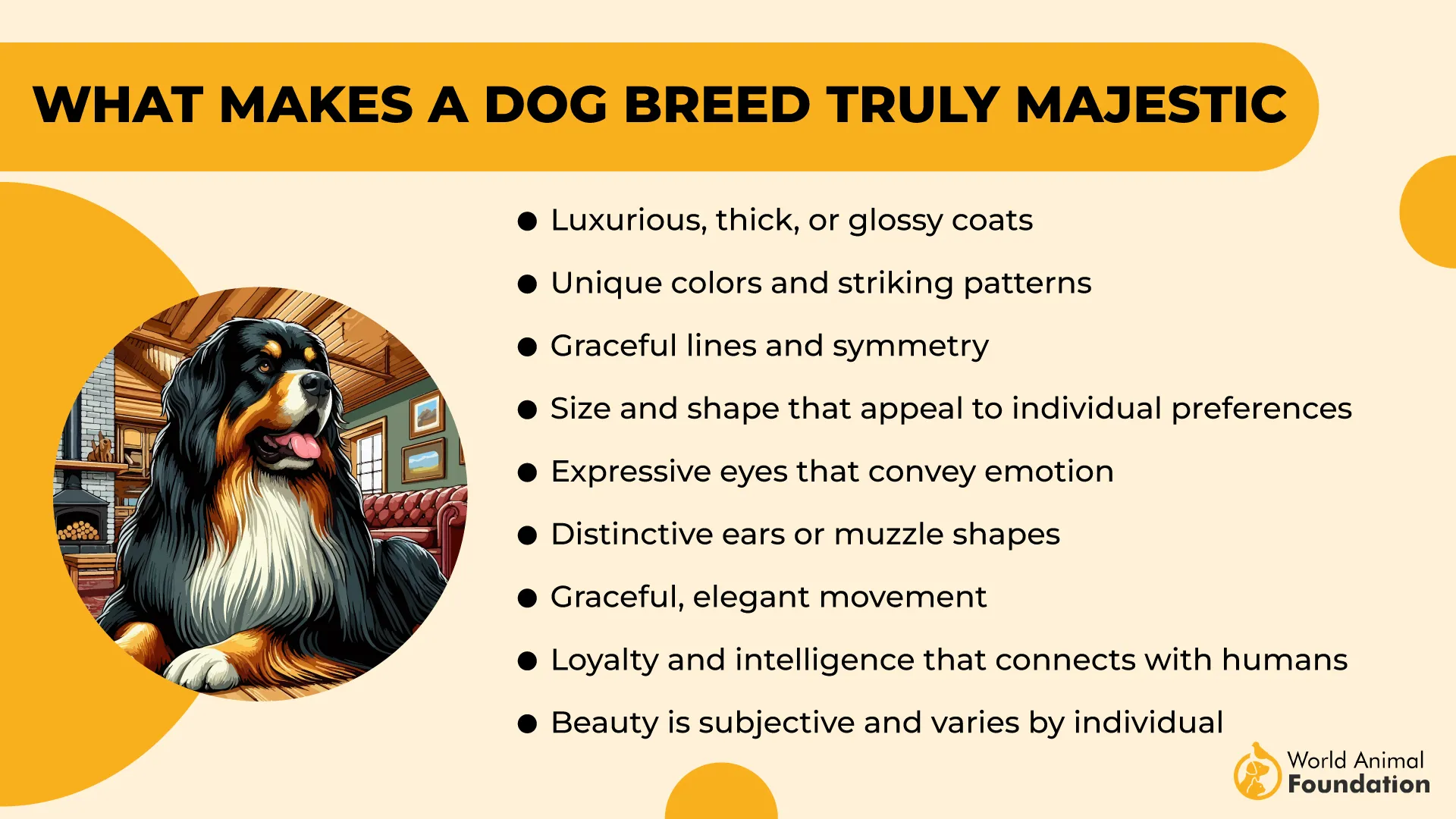
History
The Shikoku, also referred to as Shikoku Inu or Kochi-ken, hails from the mountainous regions of Japan’s Shikoku Island. Traditionally employed to track and hunt wild boar, the breed was treasured by Japanese hunters for its stamina, bravery, and unwavering focus in the field.
Despite its strong prey drive, the Shikoku is calm and affectionate toward its family. Though not yet officially recognized by the American Kennel Club, it is listed in their Foundation Stock Service, reflecting its rarity and cultural importance in Japan.
Fact: The Shikoku stands 17 to 22 inches tall and typically weighs between 35 and 55 pounds.
6. Tosa Inu
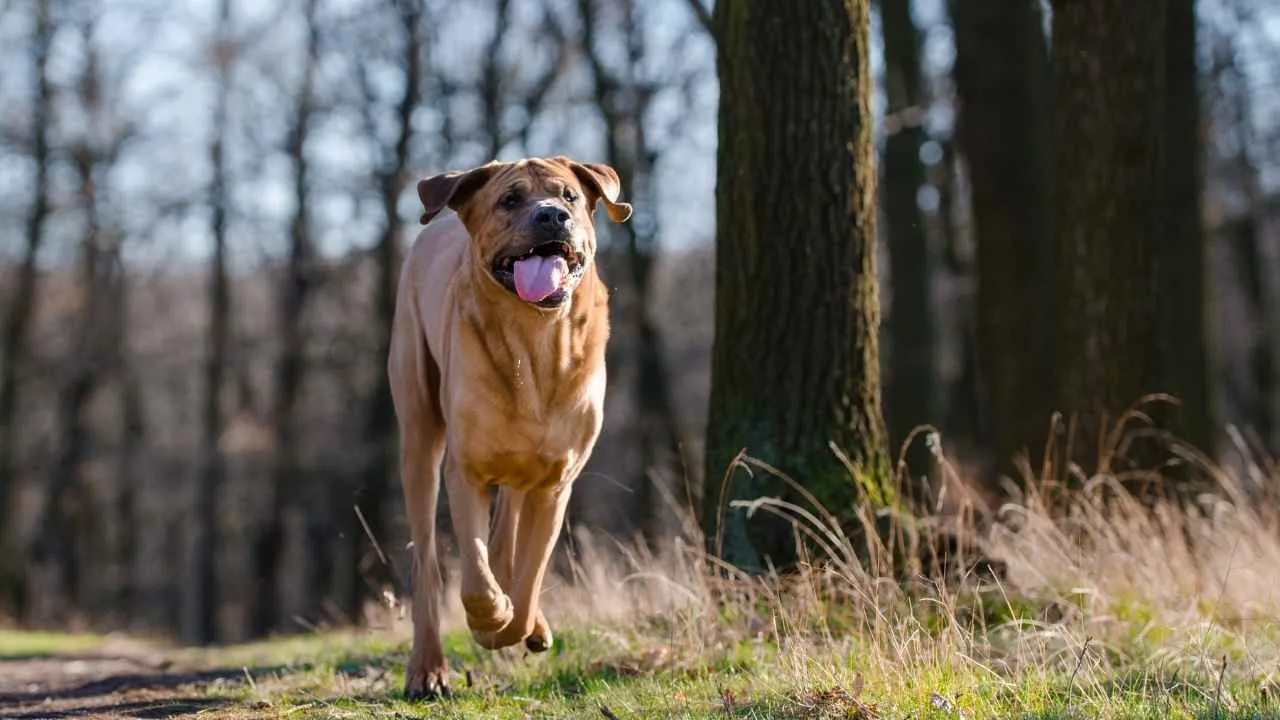
The Tosa Inu, Japan’s heavyweight guardian, stands out as the largest of the nation’s native breeds. With a broad frame and short, dense coat in shades like fawn, black, or brindle, this mastiff-type dog can weigh anywhere from 100 to 200 pounds and reach heights of up to 32 inches.
While their stature may appear formidable, modern Tosas are composed, affectionate within their family circle, and known for their calm loyalty. Though not excessively energetic, they require experienced handlers who can manage their strong will and ensure early socialization, especially around unfamiliar dogs.
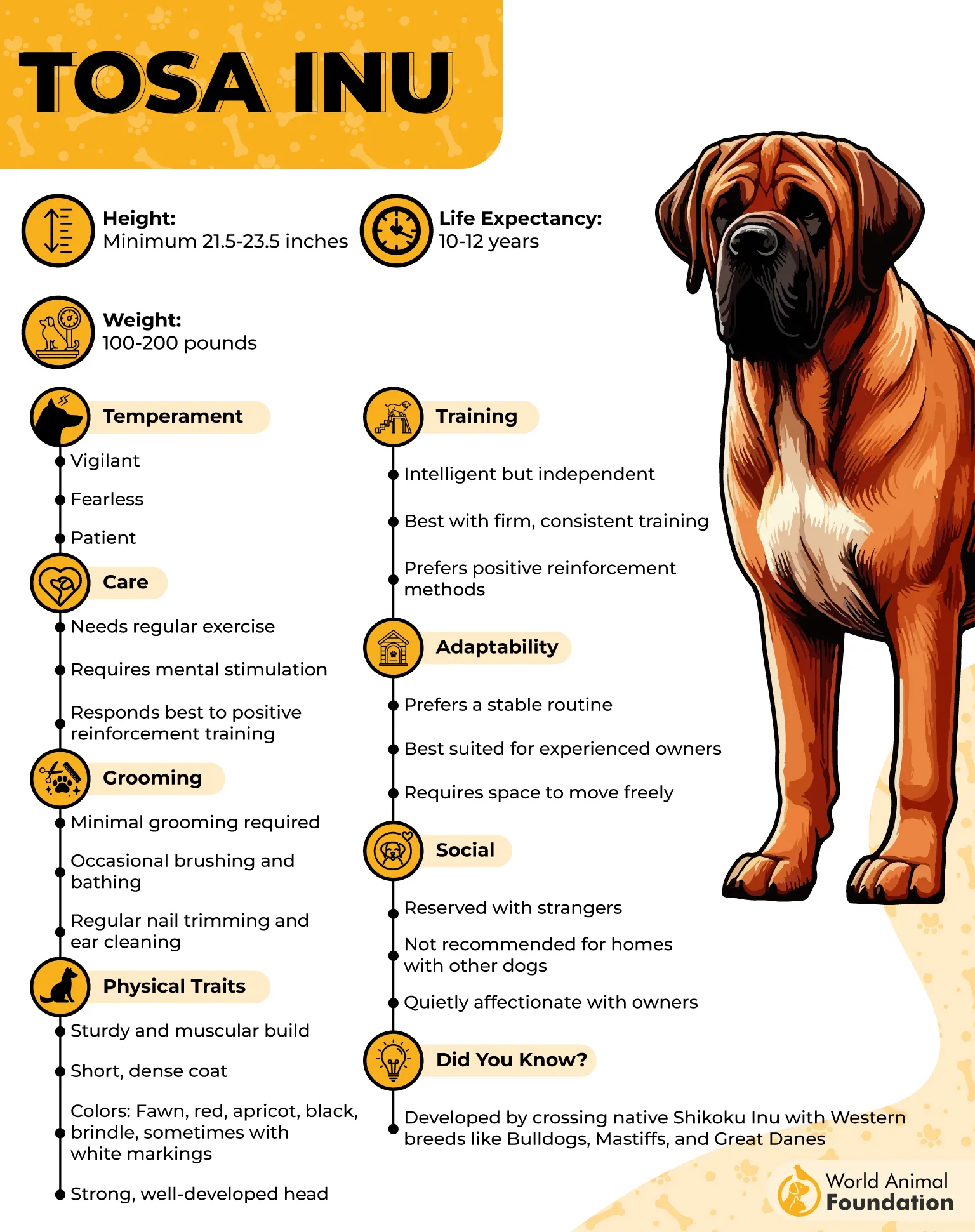
History
The Tosa Inu’s origins trace back to the Tosa region of Japan, where it was developed in the 19th century specifically for dogfighting, a legal and culturally significant sport in Japan. The breed was crafted by crossing native Shikoku dogs with various European breeds, including mastiffs and bulldogs, to enhance strength and endurance.
Over time, the Tosa’s role evolved beyond the ring, becoming a valued protector of home and family while still retaining its powerful build and courageous temperament.
Fact: Although not recognized by the AKC, this large dog breed is part of the AKC Foundation Stock Service due to its rarity and historical significance.
7. Kai Ken
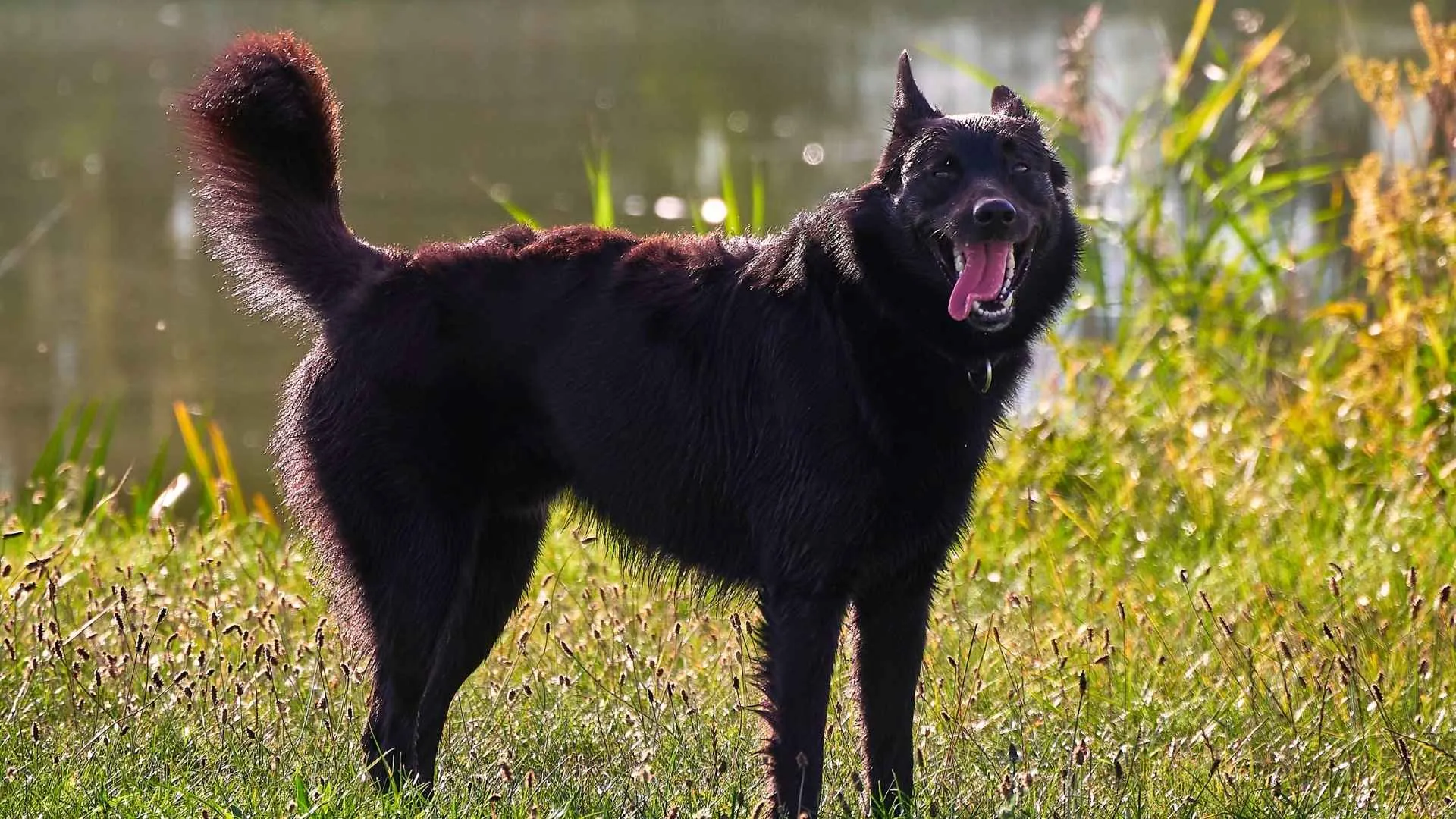
They are admired for their striking brindle coat and natural athleticism. Originally developed for hunting in the rugged terrain of Japan’s Kai Mountains, this medium-sized dog is both agile and determined, capable of feats such as climbing trees or crossing rivers in pursuit of prey.
With a protective yet affectionate temperament, Kai Kens are deeply loyal and thrive in homes where they can stay mentally engaged and physically active. Their intelligence, coupled with a desire to please, makes them responsive to training and excellent companions for dedicated owners.
History
Native to the isolated Kai Province, this athletic dog is one of Japan’s six recognized indigenous breeds. Hunters relied on these dogs for tracking boar and deer through forested mountains, and their camouflaging brindle coat evolved to suit this task.
Revered for their courage and devotion, Kai Kens have long been cherished as trustworthy guardians of the home. Though still rare and not officially recognized by the AKC, they hold a place in the Foundation Stock Service, preserving their legacy for future generations.
Fact: This intelligent breed stands between 15.5 to 19.5 inches tall and weighs 20 to 40 pounds, with a brindle coat that blends beautifully into natural surroundings.
8. Kishu
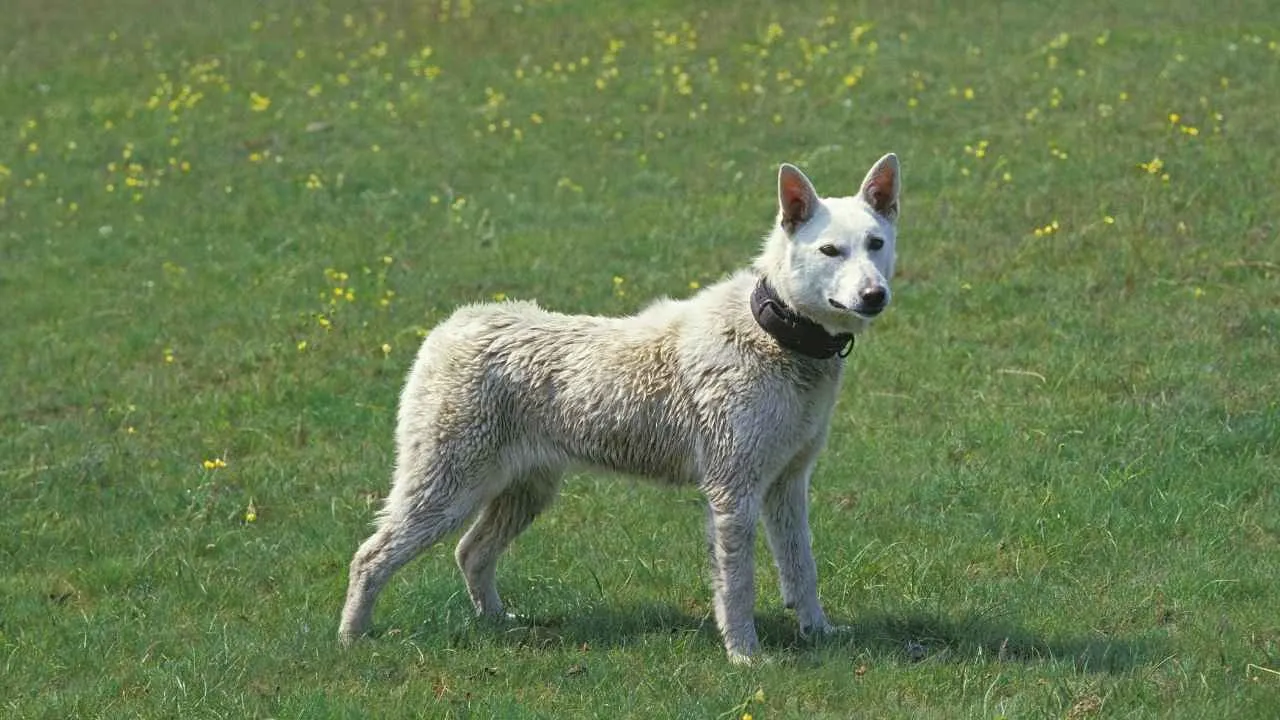
The Kishu is a poised, medium-sized hunting dog originating from Japan’s mountainous Kii Peninsula. Known for its alert gaze and dignified posture, this breed stands 17 to 22 inches tall and weighs between 30 to 60 pounds. Its short, coarse coat, often white, but also found in red, sesame, or black and tan, was favored by hunters for visibility during boar and deer pursuits.
With triangular ears, a fox-like face, and a curled or sickle-shaped tail, the Kishu embodies both elegance and resilience. Though deeply affectionate and loyal to their families, Kishus can be aloof with strangers and may show a strong prey drive, making early socialization essential, especially in multi-pet homes.
History
The Kishu traces its lineage to ancient mountain dogs used by hunters in the Wakayama region. For centuries, they served as trusted partners in challenging terrains, valued for their focus and quiet determination. Once common across Japan, the Kishu was named a national treasure in 1934.
Their population has declined in modern times, in part because their intense hunting instincts and independent nature don’t always suit urban living. Nevertheless, the Kishu’s calm demeanor and enduring loyalty continue to appeal to those familiar with its storied legacy.
Fact: Before 1934, Kishus came in various coat patterns, but by 1945, only solid colors remained accepted.
9. Japanese Terrier
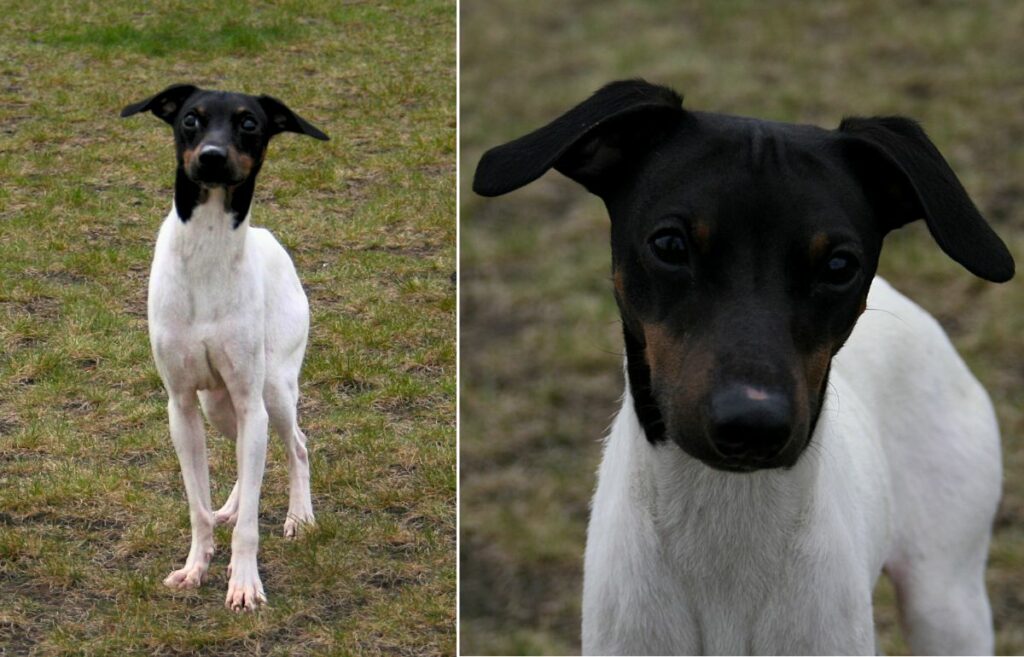
Small in size but bursting with personality, the Japanese Terrier is a spirited and nimble companion. Known for its sleek, glossy coat and lively disposition, this toy-sized breed thrives on interaction and activity. Weighing between 5 to 10 pounds and standing 11 to 13 inches tall, these compact dogs are brimming with intelligence and independence.
Their alert nature and high energy levels make them ideal for households that can provide regular engagement and exercise. With their smooth white coat accented by black and tan markings, they carry a striking yet refined appearance.
History
The Japanese Terrier traces its roots to the early 1700s during Japan’s Edo period. English Smooth Fox Terriers brought by European traders were crossbred with native Japanese small dogs and later Italian Greyhounds, forming the foundation of what would become known as Kobe Terriers. By the 1900s, further blending with English Toy and Toy Bull Terriers refined the breed.
Officially recognized by the Japan Kennel Club in the 1930s, their population nearly vanished during World War II. Today, they remain rare and are primarily found in Japan, continuing their legacy as lively vermin hunters and delightful companions.
Fact: Despite their size, Japanese Terriers historically hunted boar and remain agile and tenacious to this day.
Conclusion
Japanese dog breeds embody a unique blend of purpose, tradition, and character. From the noble Akita with its pointed ears and protective nature to the compact, spirited Japanese Terrier, each breed reflects a deep cultural bond and centuries of careful development. These dogs were not just companions, they were hunters, guardians, and symbols of well-being. Their roles in society, shaped by geography and the breed’s history, continue to influence their modern-day temperament and appeal.
Beyond the breeds discussed, Japan is home to other dogs equally steeped in tradition, such as the Japanese Spaniel, known for its affectionate demeanor, or the powerful Japanese Mastiff, bred for strength and loyalty. Likewise, other spitz-type dogs share ancestry with the Akita, highlighting the regional diversity among Japanese breeds. Together, these canines offer a captivating glimpse into Japan’s enduring respect for dogs, not just as pets, but as integral members of the family and culture.


